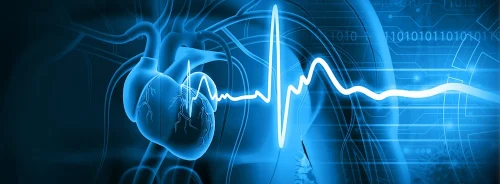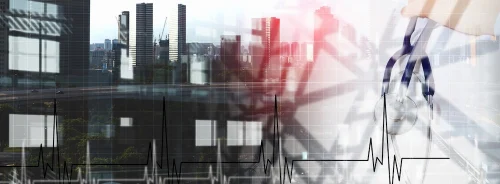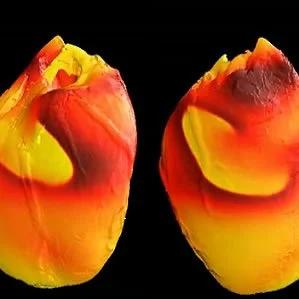Researchers from Georgia Institute of Technology have discovered a fundamentally new source of electrical instability that may cause cardiac fibrillation (erratic heartbeat). The discovery, reported in the journal Physical Review Letters, could potentially lead to new methods for predicting and preventing this life-threatening condition.
See Also: Does Cardioversion for AF Improve Quality of Life?
A steady heartbeat is maintained by electrical signals that originate deep within the heart and travel through the muscular organ in regular waves that stimulate the coordinated contraction of muscle fibres. This process can be interrupted by blockages in electrical conduction – such as scar tissue from a heart attack – creating chaotic spiral-shaped electrical waves that interfere with one another. The resulting electrical turbulence causes the heart to beat ineffectively, quickly leading to death.
Instabilities at the cellular level, especially variation in the duration of each electrical signal – known as an action potential – are of primary importance in creating chaotic fibrillation. By analysing electrical signals in the hearts of an animal model, Georgia Tech's researchers found that the varying amplitude of the action potential may also cause dangerous electrical turbulence within the heart.
The cellular action potential amplitude is controlled by sodium ion channels that are part of the heart’s natural regulatory system, the research team explained. Sodium ions flowing into the cells boost the concentration of cations – which carry a positive charge – leading to a phenomenon known as depolarisation, in which the action potential of the cell rises above its resting level. The sodium channels then close at the peak of the action potential.
While variations in the duration of the action potential indicate problems with the heart’s electrical system, the researchers have now associated dynamic variations in the amplitude of the action potential with conduction block and the onset of fibrillation.
“You can have one wave with a long amplitude followed by one wave with a short amplitude, and if the short one becomes too short, the next wave will not be able to propagate,” said Diana Chen, a Georgia Tech graduate student and first author of the study. “The waves going through the heart have to move together to maintain an effective heartbeat. If one of them breaks, the first wave can collide with the next wave, initiating the spiral waves.”
If similar results are found in human hearts, this new understanding of how electrical turbulence forms could allow clinicians to better predict who would be at risk of fibrillation. The information might also lead to the development of new drugs for preventing or treating the condition.
Source: Georgia Institute of Technology
Image Credit: FDA
Latest Articles
Electrical Instability, cardiac fibrillation, electrical turbulence
Researchers from Georgia Institute of Technology have discovered a fundamentally new source of electrical instability that may cause cardiac fibrillation (erratic heartbeat).






